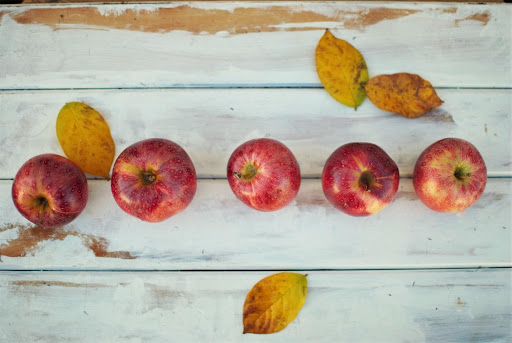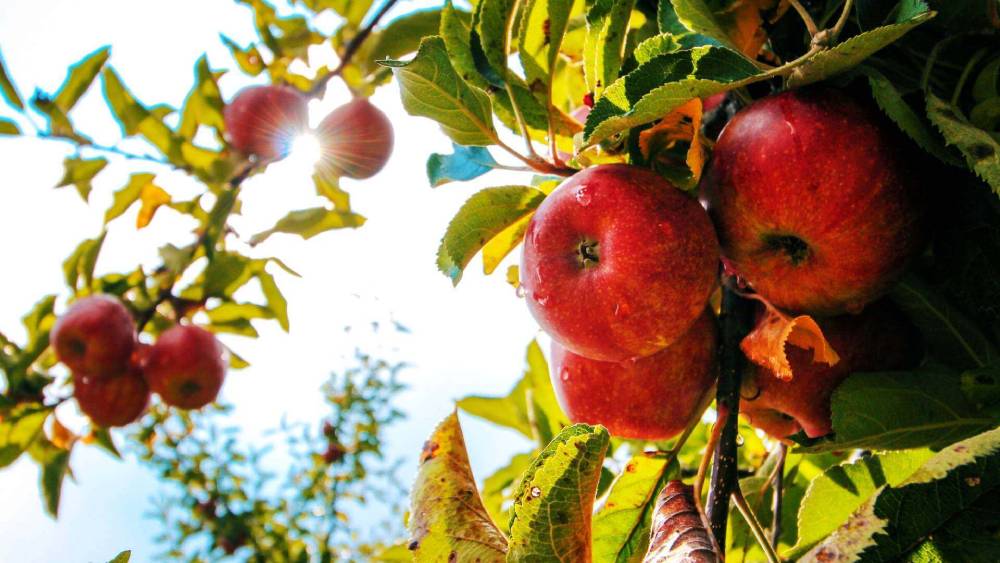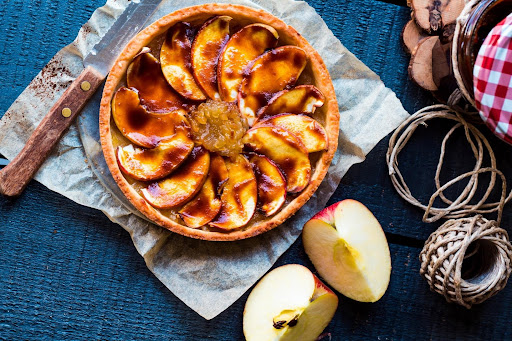Why Apples Must Make it on Your Fall Menu – Apple Nutrition & Health Benefits
When it comes to local apples, there’s more to it than the taste! These apple nutrition facts give you all the more reasons to add them to your seasonal menu.

An apple a day keeps the doctor away…and we firmly believe it also draws more clients to your restaurant! Fragrant, sweet to tart, and highly versatile, apples are densely packed with vitamins and nutrients despite their low-calorie count. No wonder we’ve been gathering them for more than 10 000 years!
One thing’s for sure: the good old apple is never out of (culinary) fashion, less so in fall! Let’s kick it off with some nutrition facts and health benefits that any apple enthusiast should be familiar with.
Apple Nutrition Facts that Make them Awesome
According to Harvard School of Public Health, one medium (raw and unpeeled) apple provides:
- 95 calories (approx.)
- 0 gram fat
- 1 gram protein
- 25 grams carbohydrate
- 19 grams sugar (naturally occurring)
- 3 grams fiber
So what do these apple nutrition numbers really tell us?
Firstly, apples are very filling, despite their relatively low-calorie count. Although they’re rich in simple sugars, their glycemic index (GI) is relatively low, Healthline tells us. They’re also a great source of fiber (both soluble and insoluble), Phytochemicals (compounds believed to protect cells from damage that could lead to cancer), and the immunity-boosting Vitamin C.
Apples Health Benefits
There are plenty of good reasons why the doc tells kids to eat their apples:
- Polyphenols, mainly contained in the apple’s peel, have antioxidant effects and contribute to lowering blood pressure and stroke risk;
- The antioxidants found in apples also play a role in cancer prevention;
- Pectin (a type of soluble fiber) prevents constipation and lowers LDL, the so-called “bad” cholesterol;
- The fiber found in apples encourages healthy digestion (apples are great probiotics, supporting the “good” gut bacteria);
- Lastly, apples are filling due to their high fiber and water counts, making them excellent additions to a healthy weight loss diet.
How to Store Apples in Your Restaurant
Knowing how to store produce properly is essential to reducing food waste in your restaurant. So how do you keep apples fresh for as long as possible?
It depends. If you plan to use them within 2-3 days, then keep apples in a cool, dark place (like a pantry) or on the counter, where they will ripen quickly. For more extended periods, though, storing apples in the crisper drawer of your refrigerator (in separate plastic bags) will keep them jucy and fresh. To further encourage moisture retention, you can place a damp towel on top of your apple batch.
Go #Local: Why Locally-Sourced Apples Will Always be Better
However, knowing how to store your apples properly won’t be of much help when you start with store-bought, months-old apples.
It’s certainly not the first time we talk about the importance of cooking with locally sourced produce, which automatically lasts longer on the shelf. On top of that, locally-grown, seasonal fruits and veggies will always be more delicious and significantly cheaper than those that must travel long days and miles to reach your restaurant.
Luckily, Riviera Produce sources peak local apples to your diners in NY, NJ, and CT. Make sure to check out our baking-friendly apple list just down below!
Apple Varieties We Carry This Fall
Varieties we carry this fall include:
- Great Raw: Macintosh, Macoun, Jona Gold, Lady, Gold Delicious, Fuji, Gala, Honeycrisp
- Great for Baking: Crispin, Winesap, Gold Delicious, Fuji, Granny Smith, Honeycrisp
- Great for Tart: Winesap, Granny Smith
- Great for Fruit Salad: Cortland
- Great for Poaching: Lady
We’re waiting for your orders at https://www.rivieraproduce.com/. Happy baking!

